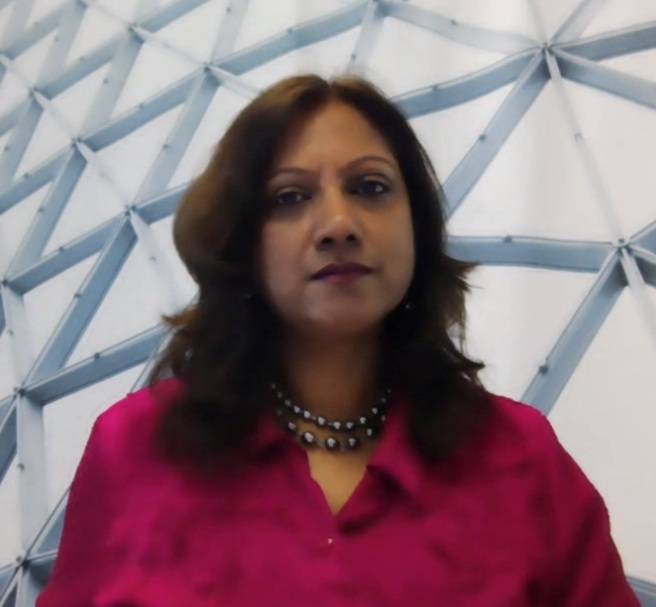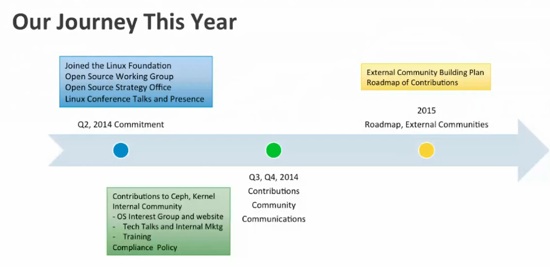 Earlier this year SanDisk committed to becoming an open source player, created an open source strategy office and joined the Linux Foundation. Since then, the flash storage company has begun contributing to open source projects in the three main areas of its business: mobile, enterprise and hyperscale computing, and consumer products, said Nithya Ruff, director of the open source strategy office at SanDisk in an online presentation yesterday.
Earlier this year SanDisk committed to becoming an open source player, created an open source strategy office and joined the Linux Foundation. Since then, the flash storage company has begun contributing to open source projects in the three main areas of its business: mobile, enterprise and hyperscale computing, and consumer products, said Nithya Ruff, director of the open source strategy office at SanDisk in an online presentation yesterday.
“In every single market we play in, its imperative to be in open source,” Ruff said. “So bringing together flash and open source software was a natural strategy for us.”
SanDisk has contributed more than 40 patches to the open source Ceph project’s latest release, for example, to become the 7th largest contributor. And it’s been working on flash optimization of drivers, file systems and memory with various SoC vendors and on projects such as Android, Hadoop, and Apache Cassandra, as well as contributing upstream to the Linux kernel. Such contributions put SanDisk, a newcomer to open source, on the map as a company that’s serious about working with other companies and projects, Ruff says.
“We need to be at the table, making them enterprise and flash ready, and work with application vendors so they can take advantage of flash in their applications,” said Ruff, who has worked in open source technology for 15 years and previously led embedded Linux strategy at Wind River/Intel.
Its recent acquisition of Fusion-io, a strong open source contributor to projects such as OpenNVM and btrfs has also helped SanDisk along the path to becoming an open source player, she said. Many of the developers there have become key advisors and leaders on SanDisk’s open source strategy, especially in encouraging a compliance policy that makes it easy for developers to use and contribute to software.
The road map for 2015 includes even more collaboration with key projects in the various areas of their business, including plans to become more involved in OpenStack’s block storage project Cinder, as well as some areas of compute, Ruff said.

Why does SanDisk care?
Today open source is pervasive, and it’s behind much of the cutting edge innovation in technology, Ruff said. Projects like Linux, started by Linus Torvalds in 1991, have created a model for open source collaboration in the enterprise. And industry standards are no longer decided behind boardroom doors, but out in the open and by default through the adoption of open source code.
Companies that want to be leaders in their industries, are not only consuming open source, they’re also contributing to it.
“We decided at the beginning of this year that it was no longer acceptable for us to be an observer, a consumer, we wanted to own our destiny,” Ruff said.
SanDisk hopes to realize the many benefits of using and contributing to open source, including cost savings, greater innovation, expanded ecosystems and interoperability, and shorter time to market. And it also hopes to become more influential in the open source projects that are key in the three markets it’s focused on. SanDisk plans to work with all of the players in the mobile, enterprise computing and consumer markets to help optimize their software and systems for flash.
“A lot of the software, whether in the edge, or in the cloud or in the data center was really designed to work with hard drives and the way they behave from a read/write and latency perspective,” Ruff said. “They don’t fully take advantage of the performance and efficiency of flash.”
In the coming year, we can expect SanDisk to further increase its participation in key projects. The ultimate goal is to become a major open source player that’s not only participating but leading the communities forward in various ways, Ruff said.
“We’ve always been an innovator for a long time – 25 years as a company,” Ruff said. “And we’re a key player in computing so it’s natural to be a part of this open source software revolution.”

